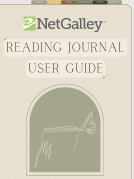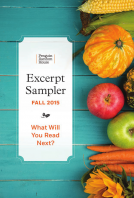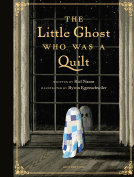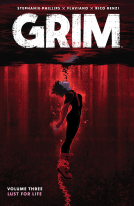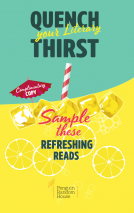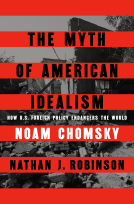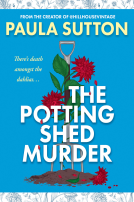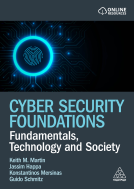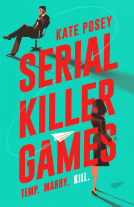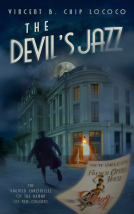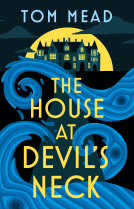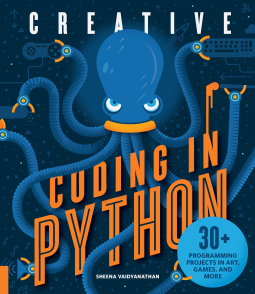
Creative Coding in Python
30+ Programming Projects in Art, Games, and More
by Sheena Vaidyanathan
This title was previously available on NetGalley and is now archived.
Send NetGalley books directly to your Kindle or Kindle app
1
To read on a Kindle or Kindle app, please add kindle@netgalley.com as an approved email address to receive files in your Amazon account. Click here for step-by-step instructions.
2
Also find your Kindle email address within your Amazon account, and enter it here.
Pub Date Dec 18 2018 | Archive Date Feb 14 2019
Quarto Publishing Group – Quarry | Quarry Books
Talking about this book? Use #CreativeCodingInPython #NetGalley. More hashtag tips!
Description
Creative Coding in Python teaches kids the fundamentals of computer programming and demonstrates how to code 30+ fun, creative projects using Python, a free, intuitive, open-source programming language that's one of the top five most popular worldwide.
Computer science educator Sheena Vaidyanathan helps kids understand the fundamental ideas of computer programming and the process of computational thinking using illustrations, flowcharts, and pseudocode, then shows how to apply those essentials to code exciting projects in Python:
- Arcade games and apps: Understand GUI (graphical user interfaces) and create your own arcade games and apps.
- Geometric art: Use turtle graphics to create original masterpieces.
- Interactive fiction: Explore booleans and conditionals to invent “create your own adventure” games.
- Chatbots: Discover variables, strings, integers, and more to design conversational programs.
- Dice games: Reuse code to devise games of chance.
- What’s next? Look at exciting ways to use your powerful new skills and expand your knowledge of coding in Python.
Creative Coding in Python gives kids the tools they need to create their own computer programs.
Marketing Plan
We will leverage the author's previous features and pitch to media that have covered her in the past, such as KQED MindShift, EdSurge, and ScientificAmerican.com.
We will create fun coding tips & graphics to be shared with bloggers, parenting media and across QuartoKids platforms.
This is a slighly older audience than Unofficial Minecraft STEM Lab for Kids (9781631594830), which is scheduled to come out in May, but it will appeal to a very similar audience, so we will pitch fans of the earlier book.
The December publication date makes it a good fit for Holiday Gift Guides from bloggers and suggestions for books to keep kids mentally active during Winter break.
As a secondary focus, we will pitch the author as an expert for stories about the importance of learning coding for kids (and, especially, encouraging girls) as a building block for all STEAM subjects.
Available Editions
| EDITION | Other Format |
| ISBN | 9781631595813 |
| PRICE | $24.99 (USD) |
Featured Reviews
 Librarian 431790
Librarian 431790
It's a long time since last I studied a new programming language and I'm happy that now there are such lovely and engaging manual.
I don't know Python but 'I'll surely try it.
The book is full of example and it's easy to follow and understand.
A very good programming manual.
Many thanks to Quarto Publishing and Netgalley for this ARC
 Sarah W, Reviewer
Sarah W, Reviewer
"Creative Coding in Python" is a great introduction to coding with fun projects. I generally liked this book and though that the projects were definitely doable. Some explanations weren't really clear enough in my opinion, but it's generally fun and well-organized.
 Evalina I, Reviewer
Evalina I, Reviewer
This book is great! It takes what could be a difficult concept and provides an easy to follow method for learning and implementing it. The graphics and wording are easy to understand and works for all ages and learning styles.
While this review is for an Advanced Reader’s Copy (ARC) provided by the publisher and NetGalley, the opinions expressed here are my own. Furthermore, I definitely plan to purchase a copy once it is released as well as use it as a gift for friends and relatives interested in learning coding.
 Reviewer 287371
Reviewer 287371
Thanks to NetGalley, I was able to read a digital ARC of Creative Coding In Python by Sheena Vaidyanathan. Important things first, I love the robotic octopus gracing the cover, it’s so ominously cute, and this book teaches Python 3.
The book dives right in with a short introduction covering what coding is, why to learn to code specifically in Python, how to install Python, your first line of code, functions, errors, algorithms, pseudocode, and flowcharts! A lot of information is squished into these first few pages, but I think it’s explained well, and without too much detail which can bog a beginner down.
The rest of the book is split into into five chapters which teach you to create your own simple chatbots, art masterpieces, adventure games, dice games, and finally your own apps and games. Each chapter focuses on a main topic and a project to code, and also introduces various concepts along the way, ending with a number of on-topic exercises. Some of these exercises are new, while some use newly acquired skills to develop further complexity to code written for previous chapters.
Creative Coding In Python is well-written with clear, concise explanations, is aesthetically pleasing, includes a number of exercises to tackle, and even introduces some rather advanced topics, such as graphics and GUIs. Plenty of ideas and resources for further development of coding skills are listed at the back as well as a handy glossary of terms.
I’d have thought this book was brilliant as a tween, and I think it’s pretty great as an adult. Definitely a book to buy!
 David S, Reviewer
David S, Reviewer
An excellent introduction to coding in general with the ideas explained useful for all languages. Obviously the book is set in python, one of the nice touches is that it uses pseudocode to guide the reader through the processes required to make multiple entry level programs and projects. This is then followed up for a more complete experience. While most people nowadays start using an online training course this book would be a good complement for an beginner regardless of age.
Disclaimer: I received a copy of this book from Netgalley for review consideration.
 Christina J, Reviewer
Christina J, Reviewer
Absolutely brilliant introduction to Python. I have programming experience from other languages, but this is explained easy enough for people that are new to programming. The book gives bitesizes introctions to various topics and suggest further thing you can try yourself. I found the book very inspirational and will highly recommend it!
 Margaret T, Reviewer
Margaret T, Reviewer
This is a great beginning coding book. It starts out slow and just keeps going and going. Loaded with projects, so you can feel a sense of accomplishment and mastery, that just kept getting a little more complex with each one. Before you know it your designing your own video game! The subject matter is solid and well written and easy to follow. Great for kids and adults!
 Reviewer 509486
Reviewer 509486
This book was incredibly surprising and a great book not only for kids but for people that are beginning to learn to code in Python.
The book has amazing graphics and a really good flow of lessons. It teaches fundamentals of python but also goes into some deeper topics that are of great help for learners of all ages.
I will definitely recommend this book to fellow Python learners.
 Alexandra "Amy" H, Reviewer
Alexandra "Amy" H, Reviewer
I loved it. I'm sure it's absolutely perfect to get kids into coding.
I love the design, for starters. Very modern, with a lot of breathing room so you don't feel smothered by all the instructions. I also love the robot penguins, they're super cute. Different things like code, pseudo code, instructions and comments are easy to differenciate thanks to different fonts, which I found to be very useful. It makes the book very easy to read and attractive.
Now I'm not a child anymore but I'm a complete beginner in Python so I had the opportunity to check if these instructions were easy to follow. Not only they are, but I would also like to point out that I've never felt talked down to. This book explains without assuming any prior knowledge, yes, but not to the point where you wonder if the author thought you were stupid, which I feel is important in children's books.
Everything is explained and there are short instructions for you to try very often so you can check if you understood how it works. I thought it was very useful because once or twice, I did think I was fine only to mess up when I tried it. Since the instructions are in small batches, it's easy to figure out where you went wrong and try again. Then you get to the end of the chapter, with a big exercise that you can tackle step by step until you make it. If you feel like it, there are a few more that you can try, then you get to the next chapter.
CCIP covers the basics, like variables, loops, lists, turtle graphics, maths, functions like random, GUI, ... And with all of this, you get to actually create things, like graphics, chatbots, madlibs and even your own arcade game. It made coding look super easy and fun and yes, it took me a while to get to the end because I wanted to do the exercises when I got to them, but it was effective because when I did get to the last exercises, I felt much more confident than I did when I first opened the book.
So I had a lot of fun and I'm definitely looking into the possibilities written in the "What's Next?" chapter. This book should be in every school library.
Thank you so much to NetGalley and Quarry Books for sending me this book!
 Martha D, Reviewer
Martha D, Reviewer
I've read a handful of kid's Python books since my own introduction to the coding language. Of them all, this is probably my favorite. Each concept is explained in a straight-forward but not overly simplified way and then reinforced with exercises. And not only are there step by step projects, there are also challenges. These are ideas that you could solve using the introduced concepts, but the method is left up to the reader. Kids are encouraged to experiment, to make mistakes, and try again. It's easy to take these introduced ideas and imagine how one might build upon them to create more complex projects. A great choice for your middle grader who is showing and interest in programming.
 Jamie K, Librarian
Jamie K, Librarian
Creative Coding in Python is a really neat book. It contains a basic overview of Python language, then goes into some interesting projects that can be done in Python. The book is written for younger readers (middle school maybe?) but it could be appealing to older people as well who are interesting in learning how to code. The illustrations in the book are really cute and it could be a great resource for anyone wishing to strengthen skills in Python.
 marx l, Reviewer
marx l, Reviewer
A good introductory text to programming concepts and structuring using Python. Suitable for beginners, and graphical presentation clearly designed for young users. Covers quite a bit of ground and a useful foundation for later programming studies.
 Cherry S, Reviewer
Cherry S, Reviewer
A great introduction to coding for pre-teens with progressive exercises which build up to a fun and interactive experience. Highly recommended for anyone who wants to find a way to get their kids interested in programming.
 Reviewer 446033
Reviewer 446033
An excellent way to introduce kids to STEAM. The tutorials and materials can be used in class.
#CreativeCodingInPython #NetGalley
 Darren J, Reviewer
Darren J, Reviewer
This is a great book for those wanting to learn how to programme in Python. The exercises are fun and gradually build the skills of a beginner to get a good grounding in beginning and enhancing their programming skills. Highly recommended.
 Rianna B, Reviewer
Rianna B, Reviewer
This is definitely a fun way to learn Python. The text is easy to follow, full of fun projects, building up in intensity and difficulty, and the graphics are colorful and entertaining.
Sheena Vaidyanathan teaches computer science to 11 to 13 year old children and I think you can definitely tell that she has the teaching techniques for that age bracket down, making this a great guide for any young person in your life who wants to add an electronic language to their toolbox.
Python has quickly become one of the top programming languages in the technology industry. It is flexible, easily followed and read (due to it's mandatory formatting), and extremely versatile. As a SQL database analyst I have been hearing about Python for some time and realized that I had better learn it ASAP. So this C++, HTML 3 and VBA script writer evolved once again. (Yes I know it shows I'm old when you see the first languages I learned).
This book is a great introduction for those (unlike myself) who need to learn how code is built before they can begin to learn the programming language. Designed and set-up for children; I would also recommend Creative Coding in Python for the new to computer programming student.
If you are a coder by trade and already understand 90% of the concepts out there you don't need this book. I mean it's a pretty, well-designed, and breaks down complex concepts into easily digestible chunks; all good things. But if you already understand logic, counting algorithms, translations, etc. because you code in another language then you would be better served to learn the Python syntax and dive right in.
The examples of things to do in Python in Sheena Vaidyanathan's text book are very kid friendly. They are about creating games, animations or logic puzzles. All things that are fun to make but not necessarily practical if you want to learn quick and have 'work-esque' examples. As someone in the industry I can tell you that the core concepts are all there. However, you will NOT be prepared for a job in the tech. industry just because you can do the exercises in this book. The exercises are merely the first stepping stones and base knowledge that is needed in order to use Python to it's full (and powerful) capability. I did however have fun doing a few of the exercises and my co-workers thought it was a 'cute' and fun way to introduce coding to a newbie.
Please note: I received an eARC of this book from the publisher via NetGalley. This is an honest and unbiased review.
 Vidya T, Reviewer
Vidya T, Reviewer
First Thoughts:
Love, love all the cute, robotic characters used in the book to help guide the reader along! The organization of the book is logical and makes for easy learning as it progresses from the simplest to the more complex concepts and exercises for coding in Python.
The Introduction:
The introduction is pretty comprehensive in what it includes; though briefly and simply written to appeal to the target audience, it is a hold-all type of introduction.
It includes topics such as: what is coding, why coding, why Python, as well as how to install and start using Python. The introduction also has a beginners overview of programming concepts such as functions, errors, algorithms, pseudocode, as well as flowcharts; this will definitely help the reader. In addition, a how to use the book text-box makes it easy to navigate the rest of the book.
The Chapters:
The individual chapters themselves are super-interesting and easy to follow. They are organized by ideas and programming concepts; including but not limited to – data use and storage, loops, lists, conditional statements, functions, and GUI.
Each chapter teaches those concepts using straight-forward, easy to understand instructions that do not talk down to the reader! It also uses examples that take the reader step by step, so we can code along with the teacher – the book, in this case.
The reader is encouraged to try out the concepts learned earlier with exercises as the chapter (and the book) progresses. Both concepts and exercises gradually and smoothly increase in complexity; allowing the reader to build on previous knowledge.
Each chapter ends with a project that the reader can work on using those ideas and concepts learned earlier; along with a next steps section that gives us more ways we can use and enhance our learning from that chapter.
Chapter projects are fun projects, starting from the simpler to more complex ones – chatbots, geometric art, and games (dice games. arcade games and more).
Towards the End:
The book ends with a useful glossary of terms, resources used for the book that the reader can use to do further learning (and trust me, after reading this book, you will be looking forward to learning more as the author does a wonderful job of making learning coding fun)
Additional Thoughts:
I love that the author introduces so many concepts that normally do not make it into a coding book for beginners – like GUI and gaming! Using graphics and gaming is a wonderful way to ensure kids will want to and enjoy learning.
Though I am not a beginner to coding or to Python(relatively), I did learn quite a bit from this book. I also had lots of fun doing the exercises (still many remaining to work on that I am looking forward to as well!)
What I have discovered about Python is there are so many in-built functions as well as modules to import and add-on, that I have much to learn still; and this book confirms that fact for me.
This book seamlessly introduces the readers to additional topics of importing modules (turtle and Tkinter for example) as they work on creating artistic masterpieces and cool games!
In Summary:
Oh how I wish I could say ‘Great Snakes!’ (with a complimentary inflection, of course) to describe this book in two words! But the origin and usage of that phrase seems to be in question still.
Anyways, this book is definitely a great book for anyone who wants to start learning Python using these creative means. Perfect for middle-schoolers, and will work for learners of all ages as well. Teachers will also find this book valuable.
Rating: 5+/5
Reading Level: Middle-graders and above as well!
Disclaimer:Many thanks to Quarto Publishing and Netgalley for the eARC of this book. The opinions expressed are my own and not influenced by others.
I think this book is a really great way to get people into coding in python. It isn't as 'pick up and go' as I would have liked, but I did appreciate that it doesn't feel overly gendered (a problem many books in this genre and field have). I think if you have the time to look into this subject and the drive to fill in some of the gaps for yourself this would be a great way to get into coding at any age.
Readers who liked this book also liked:
Keith Martin; Konstantinos Mersinas; Guido Schmitz; Jassim Happa
Business, Leadership, Finance, Computers & Technology, Reference
Vincent B. "Chip" LoCoco
Historical Fiction, Horror, Mystery & Thrillers

